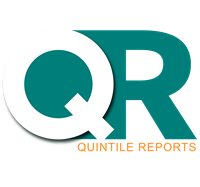
Veterinary Cardiology Market Size, Share And Growth Report 2034
The Veterinary Cardiology market under analysis is characterized by dynamic growth and evolving trends that are reshaping the competitive landscape. With 2023 serving as the base year for this Veterinary Cardiology market study, recent data highlights a significant expansion driven by technological advancements, rising consumer demand, and a growing focus on innovation. Companies are refining their go-to-market (GTM) strategies to effectively capture these emerging opportunities and respond to the rapidly changing market dynamics.
Key trends influencing the Veterinary Cardiology market include the rapid adoption of digital technologies, the integration of sustainable practices, and the increasing importance of customer experience. These trends are not only driving growth but also creating new challenges for industry participants, who must adapt their GTM strategies to navigate regulatory changes, supply chain disruptions, and fluctuating economic conditions. Despite these challenges, the Veterinary Cardiology market is poised for sustained growth, with emerging markets playing a critical role in the expansion of the industry.
Looking ahead, the Veterinary Cardiology market is forecasted to continue its upward momentum through 2034, supported by ongoing investments in research and development, strategic partnerships, and mergers and acquisitions. Companies that can effectively tailor their GTM strategies to the evolving market landscape, innovate, and meet shifting consumer demands are likely to achieve sustained success. Veterinary Cardiology market report provides a comprehensive analysis of the current market environment and offers valuable insights into the key drivers, challenges, and opportunities that will shape the industry's future over the next decade report offers a comprehensive analysis of market dynamics across various segments, regions, and countries, incorporating both qualitative and quantitative data. It covers the period from 2017 to 2034, providing a detailed examination of historical performance, current market conditions, and future projections.
Historical Analysis (2017-2023): The report presents a thorough review of market trends, performance metrics, and growth trajectories for the years 2017 through 2023. This historical perspective is crucial for understanding past market behavior and identifying patterns that influence current and future market dynamics.
Forecast and Projections (2025-2034): Building on historical data, the report provides forward-looking insights, including market forecasts and growth projections from 2023 to 2034. It details anticipated market trends, emerging opportunities, and potential challenges across different segments, regions, and countries.
Compound Annual Growth Rate (CAGR): The report includes a precise calculation of the compound annual growth rate (CAGR) for the forecast period of 2025 to 2034. This metric will be instrumental in assessing the expected growth trajectory and the overall market potential during the forecast period.
The Veterinary Cardiology Market is gaining traction globally due to rising pet ownership, increasing awareness of companion animal health, and advancements in diagnostic technologies. As more pet owners consider animals as family members, theres a growing demand for specialized treatments such as echocardiography, electrocardiograms (ECGs), and interventional cardiology procedures to manage conditions like congestive heart failure, valvular diseases, and arrhythmias in dogs and cats.
Technological improvements in veterinary diagnostics, combined with increased availability of veterinary specialists, are boosting early detection and intervention. Companion animal insurance coverage and veterinary wellness programs are also playing a pivotal role in making cardiology services more accessible. Furthermore, small animal clinics and hospitals are increasingly integrating cardiology departments or collaborating with referral specialists for advanced care.
Insights suggest a growing emphasis on minimally invasive procedures and portable diagnostic equipment to facilitate real-time cardiac assessments. The expansion of veterinary telemedicine is also enabling remote cardiac consultations and follow-ups, improving long-term care outcomes for pets in suburban and rural regions.
Regionally , North America dominates the veterinary cardiology market due to high pet expenditure, advanced clinical infrastructure, and a robust base of veterinary cardiologists. Europe follows closely, with rising adoption of companion animals and favorable regulations supporting animal health services. In Asia-Pacific, countries like Japan, Australia, and India are witnessing steady growth, driven by urbanization, increasing awareness, and a surge in animal healthcare investments.
Expansion of Services: Veterinary clinics are broadening cardiology offerings through partnerships and in-house capabilities.
Technological Advancement: Use of 3D imaging, Doppler ultrasound, and wearable cardiac monitors in animals.
Education & Training: Increasing number of veterinary cardiology certification programs and specialized training.
Telemedicine Integration: Growing use of remote diagnostics and second opinions via veterinary teleconsultation platforms.

Legal Disclaimer:
MENAFN provides the
information “as is” without warranty of any kind. We do not accept
any responsibility or liability for the accuracy, content, images,
videos, licenses, completeness, legality, or reliability of the information
contained in this article. If you have any complaints or copyright
issues related to this article, kindly contact the provider above.
Most popular stories
Market Research

- Psy Protocol Testnet Combines Internet Scale And Speed With Bitcoin-Level Security
- Dupoin Reports Global Growth, Regulatory Coverage, And User Experience Insights
- Luminadata Unveils GAAP & SOX-Trained AI Agents Achieving 99.8% Reconciliation Accuracy
- Mutuum Finance (MUTM) New Crypto Coin Eyes Next Price Increase As Phase 6 Reaches 50% Sold
- 0G Labs Launches Aristotle Mainnet With Largest Day-One Ecosystem For Decentralized AI
- B2BROKER Taps Finery Markets To Power Institutional Crypto OTC On B2TRADER



















Comments
No comment